How to Strip a Wire: DIY Easy Guide
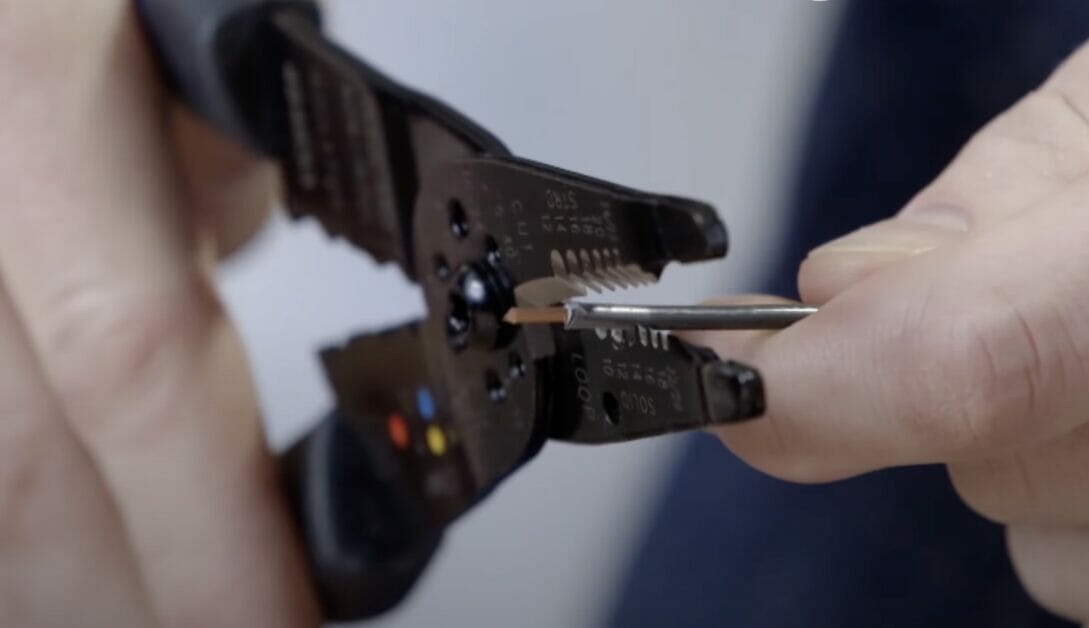
Stripping wires can get tricky, and though it’s a common practice, not everyone knows how to do it right; that’s why I’m here and stepping up to teach you how.
Quick Summary: Strip wire using a manual or automatic wire stripper.
- If using a manual one, gently pull the wire’s end into the right-sized hole.
- If using an automatic wire stripper, insert the wire’s end into the clamp part and press the handles.
If you need to strip the entire insulation off, I suggest using a circular wire stripper or a wire stripping machine.
Now let’s get into some real detail.
Stripping a Wire
When or Why is it Necessary?
Stripping a wire is necessary before you can use it productively.
If you’re only going to store the wire, it’s unnecessary, but if you connect it to use it, then it is. It’s usually the next step after cutting the wire to the required length and before connecting it to a terminal or somewhere else or if twisting and splicing with other wires.
We strip the insulation off the end of a wire so that the conductor inside can make good contact, which is necessary for electricity to flow.
The Right Tool to Use
The right tool to use to strip a wire is a wire stripper, so let’s introduce it first before showing how to use it.
A multipurpose tool or pliers can be used instead of a wire stripper to strip wires, but they’re not specifically designed for wire stripping. Don’t be tempted to use a utility knife, as it could nick the wire.
Also, don’t strip a wire by circling the insulation and cutting it with pliers. It might pull off the insulation but also cut the conductor inside, which can break off at some point.
A wire stripper is a dedicated tool for this specific task, although some can also be used for cutting wires and forming hooks. You can use either a manual or an automatic wire stripper.
![Stripping a wire using a manual and automatic wire stripper [Creative Homeowner, 2007]](https://toolsweek.com/wp-content/uploads/2023/07/stripping-a-wire-using-a-manual-and-automatic-wire-stripper.jpg)
How Much to Strip?
One consideration when stripping wire is how much insulation to strip off.
How much you should strip depends on what you will connect it to or how you will use the wire, but generally, the end is stripped about half an inch to one inch.
If, for instance, you’re going to connect it directly to a terminal or other contact (without forming a hook), half an inch (1/2) to five-eighths (5/8) of an inch should be sufficient in most cases.
But if you need to splice it or form a hook to connect it to an outlet’s terminal, you may need to go up to about one inch.
Using a Wire Stripper
Using wire stripper tips depend on which type you have.
- If using a manual wire stripper, insert the wire into the matching gauge hole, as shown above. Then, close the stripper, which will cut part of the insulation layer, and gently pull away from the useful wire end, which you should hold with your other hand. Some manual wire strippers only have one universal hole.
- If using an automatic wire stripper, you only need to place the wire as shown above and press it. It will automatically cut to the required depth and strip the insulation layer in that one motion.
I will also show how to use a circular wire stripper, which is better for stripping the entire insulation off than just the end portion below.
A wire stripping (or peeling) machine is another option for heavy-duty use.
Stripping Wire Using a Manual Wire Stripper
Here’s an example of one manual wire stripper with a single hole to put the wire’s end through.
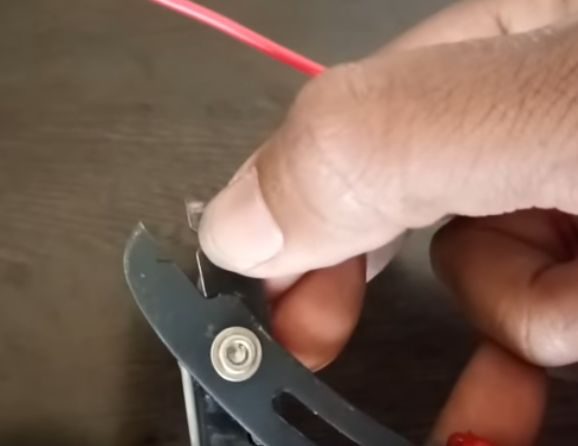
Insert the wire into the hole up to where you want to strip off the insulation layer, i.e., the required length.
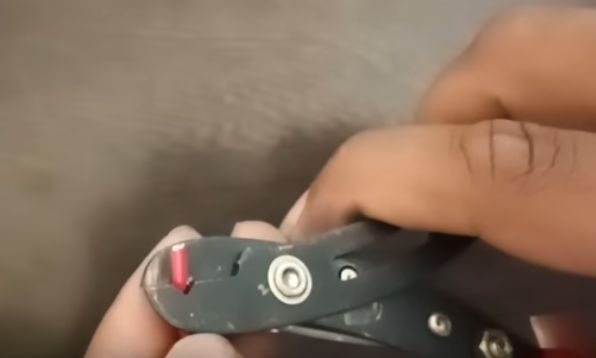
Simply pull the wire stripper when the wire is inserted in the hole, and it will strip up to that point. Don’t press too much that it cuts the wire; only sufficiently to strip off the insulation layer.
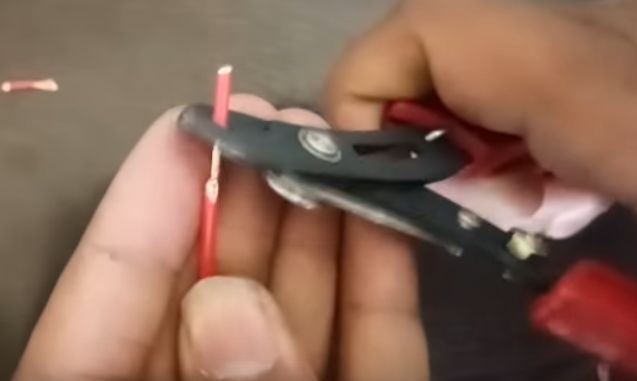
To see the wire stripping process in action with a manual wire stripper, here’s a YouTube video showing an electrician stripping the hot and neutral wires before connecting them to an outlet (from 1:20 to 1:50) [Terry Peterman]:
Stripping Wire Using an Automatic Wire Stripper
Here are the recommended steps for using an automatic wire stripper to strip wire.
Step 1: Cut the Wire
Cut the wire to the required length.
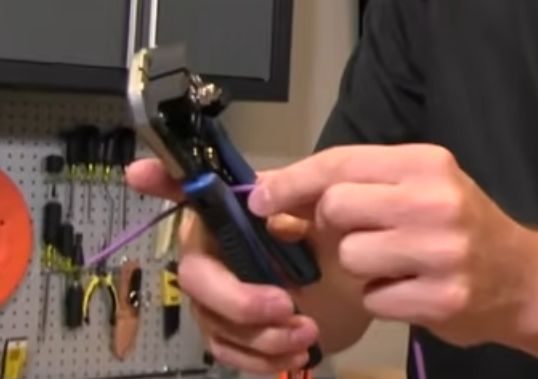
Step 2: Insert the Wire’s End
Insert the end of the wire into the clamp part of the wire stripper (usually near the top) designed to strip the wire.
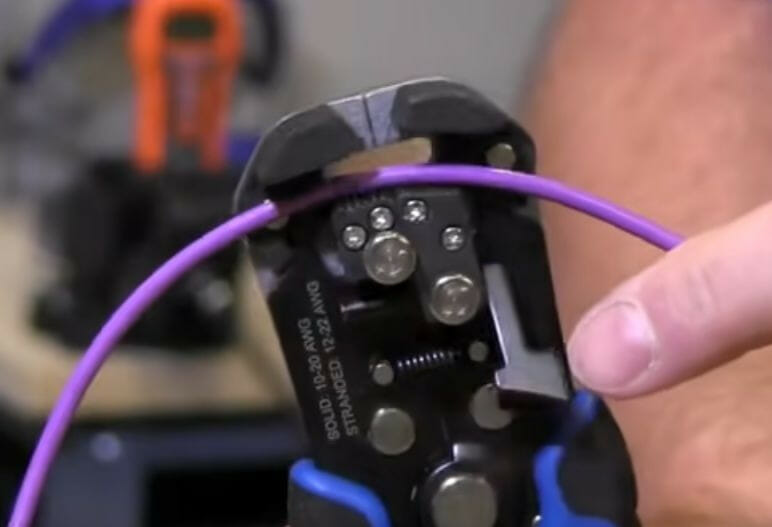
Step 3: Press
Press or squeeze the wire stripper’s two handles. This action will pull the clamp or gripper apart, where one end will hold the insulated wire, and the other will pull off the insulation, thus separating the insulated layer.
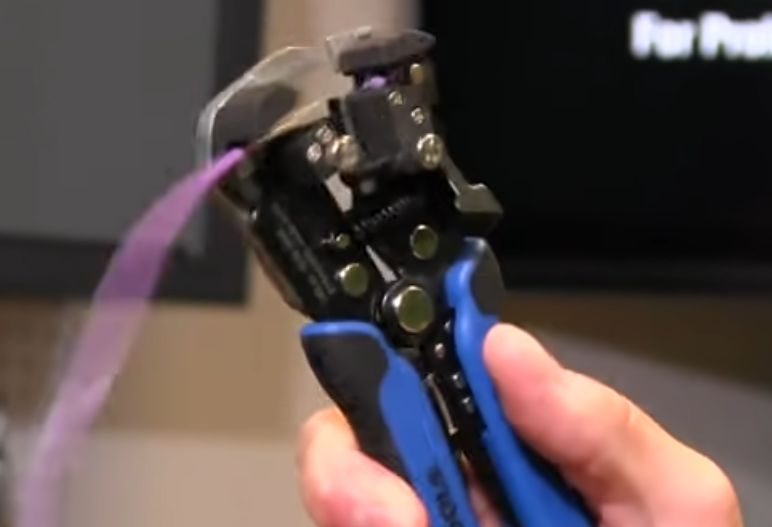
The End Result
The end result of stripping the wire should be a nice and clean cut of the insulation layer, revealing the inside conductor.
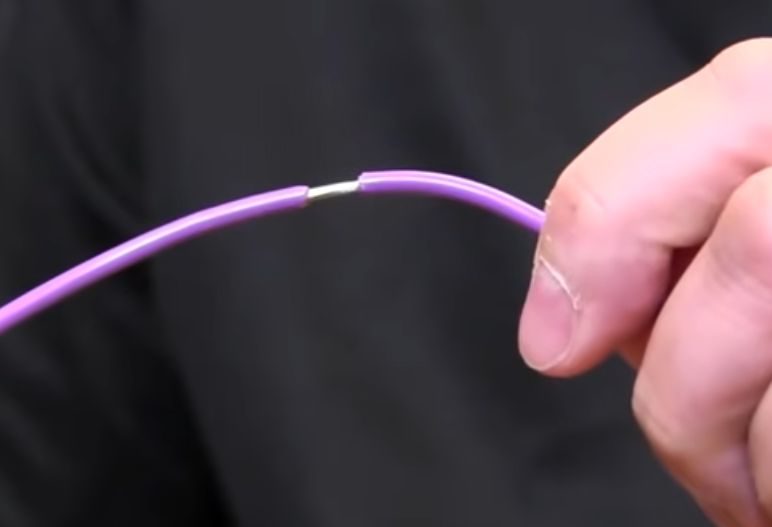
Note that an automatic wire stripper can strip a portion of the insulation layer anywhere in between. So, if you need to do that, use an automatic wire stripper.

When pressing, the gripper will pull the insulation layer apart at the point where it cuts into it.
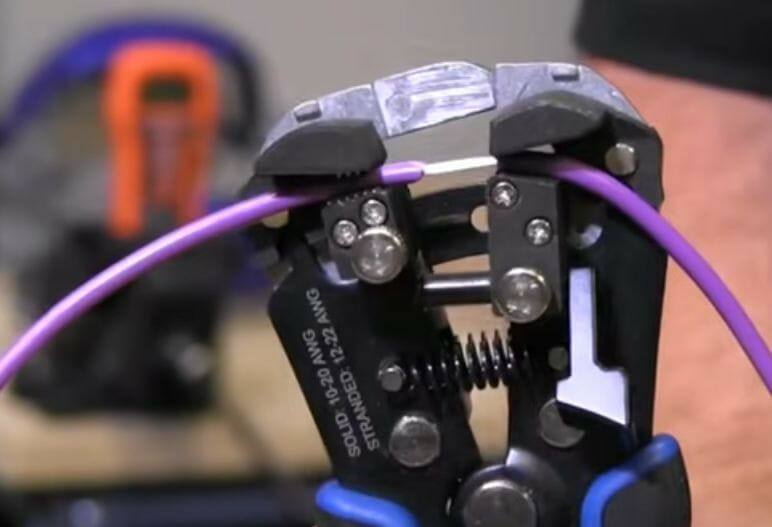
This is the result of stripping a wire in the middle:

See the process of stripping a wire using an automatic wire stripper in action [Klein Tools]:
Stripping Wire Using a Circular Wire Stripper
A circular wire stripper is a low-cost tool that uses ordinary blades to strip wire.
It’s okay for irregular use, as long as the wire fits one of its holes or if you need to strip lots of wire of the same gauge and type or even the entire insulation. That’s because it requires a lot of adjustments.
But once adjusted, you can use it as a workhorse for stripping wires until you need to change the blade.
Step 1: Match the Wire’s Gauge to the Hole
Match the wire’s gauge to the closest hole the wire fits inside.
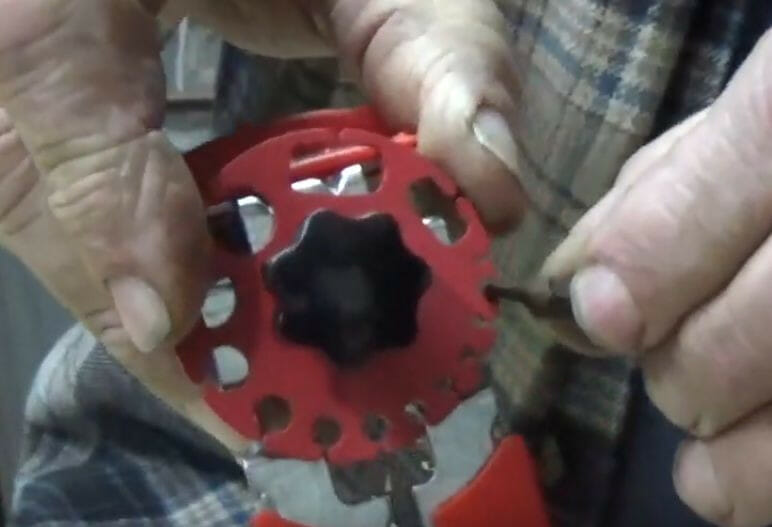
Step 2: Align the Hole and Groove
Use the large knob on the front to align the right hole to the groove for the plunger.
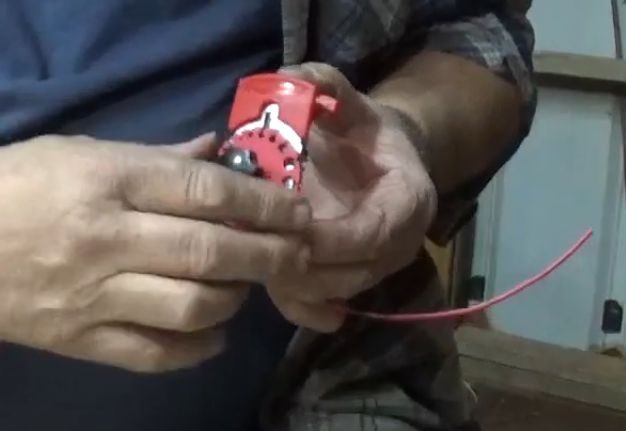
Step 3: Set the Plunger Depth
You can set how far down the plunger with a blade goes by loosening or tightening the screw over the jam nut if necessary.
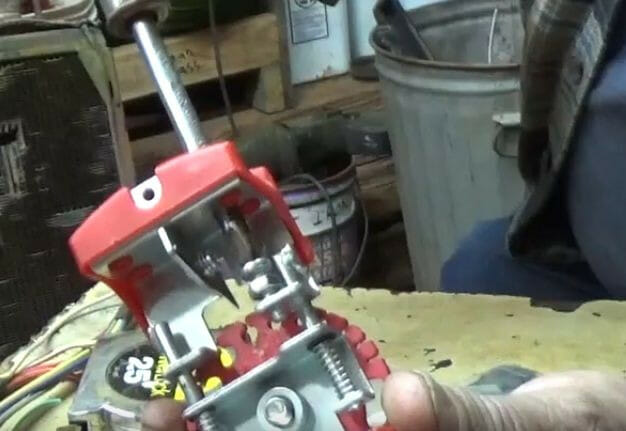
Step 4: Pass the Wire Through
Pass the wire to be stripped through the hole from the back.
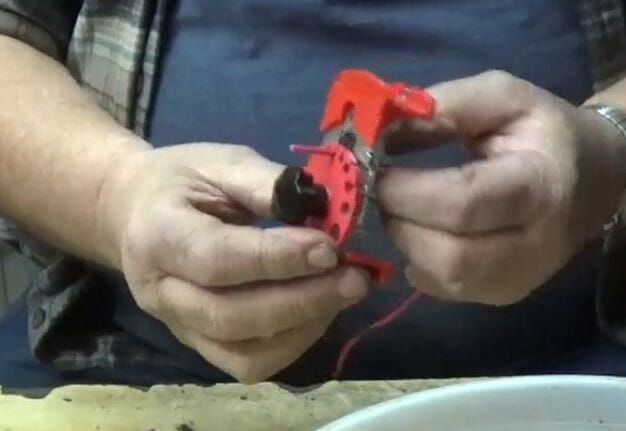
Step 5: Pull the Wire
Pull the wire through on the front side.
Using a pair of pliers might help. Only pull to the required length you want to strip. Otherwise, keep pulling if you want to strip the entire wire.
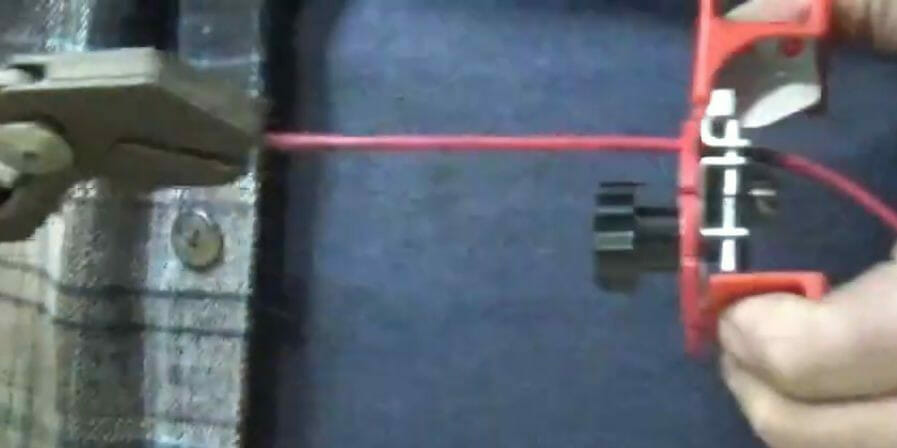
If you made the adjustments correctly, this tool should work. However, you might find this tool has a bit of a learning curve, and the wire strippers used earlier work better for you if you only need to strip wire ends rather than the entire insulation.
Stripping Wire Using a Wire Stripper Machine
Use a wire stripper machine if you aim to easily strip the entire insulation off a lot of wires to get all the copper cores or conductors out. It’s designed for heavy-duty use. Here’s an example of one:
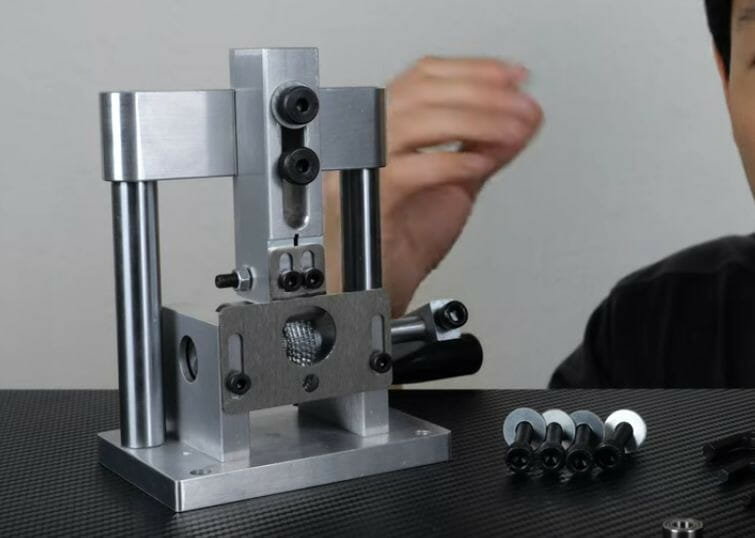
You will need to know the exact internal diameter of the wire to know how far to cut down to peel off the insulation layer.
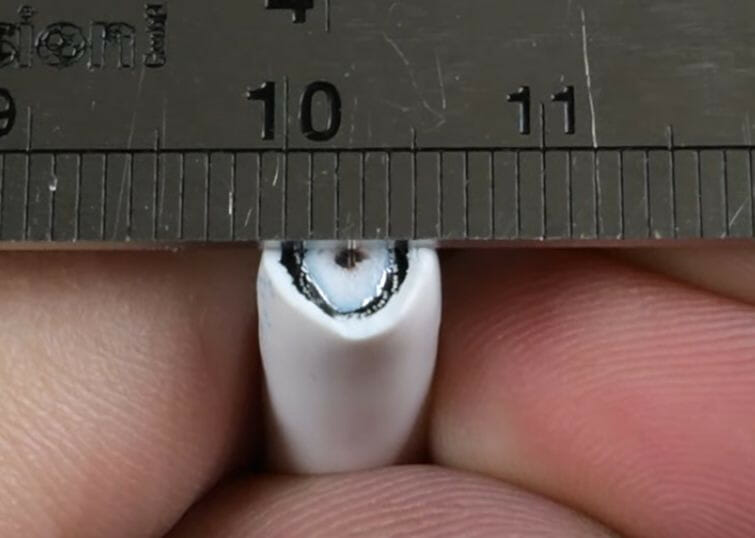
Make the necessary adjustments on the machine and push the wire through from the back, as with the circular wire stripper.
You may find that you need to vary the adjustable parts of the machine to get the best cut on a test piece before continuing. Once done, the insulation layer should come off easily, as shown below, and you can pull each wire length through from the front.
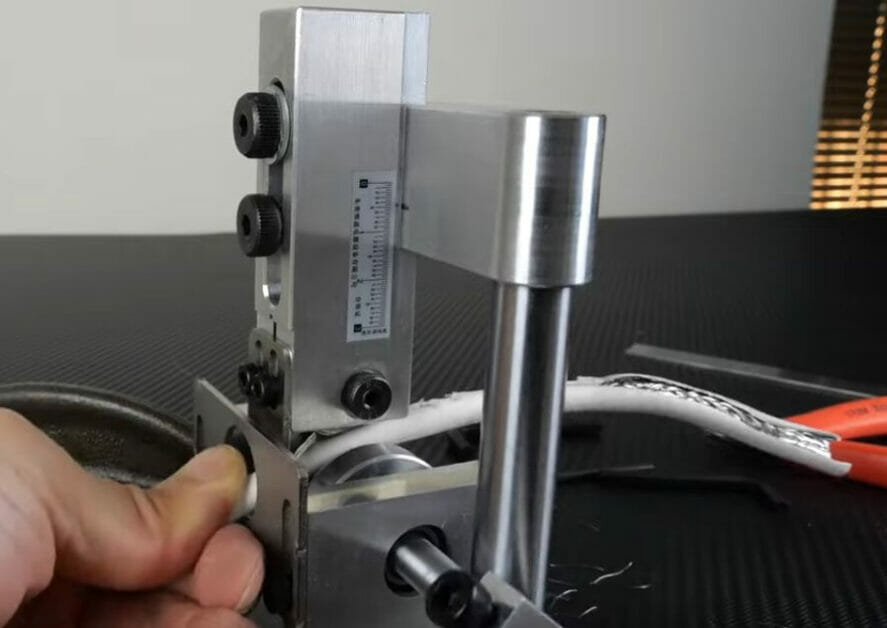
References
Creative Homeowner. The ultimate guide to wiring: complete home projects. 6th edition. Creative Homeowner. 2007
Video References:
Lowe’s Home Improvement
BeatTheBush DIY
Klein Tools
Okie Scrapper
Terry Peterman
VClassES04
